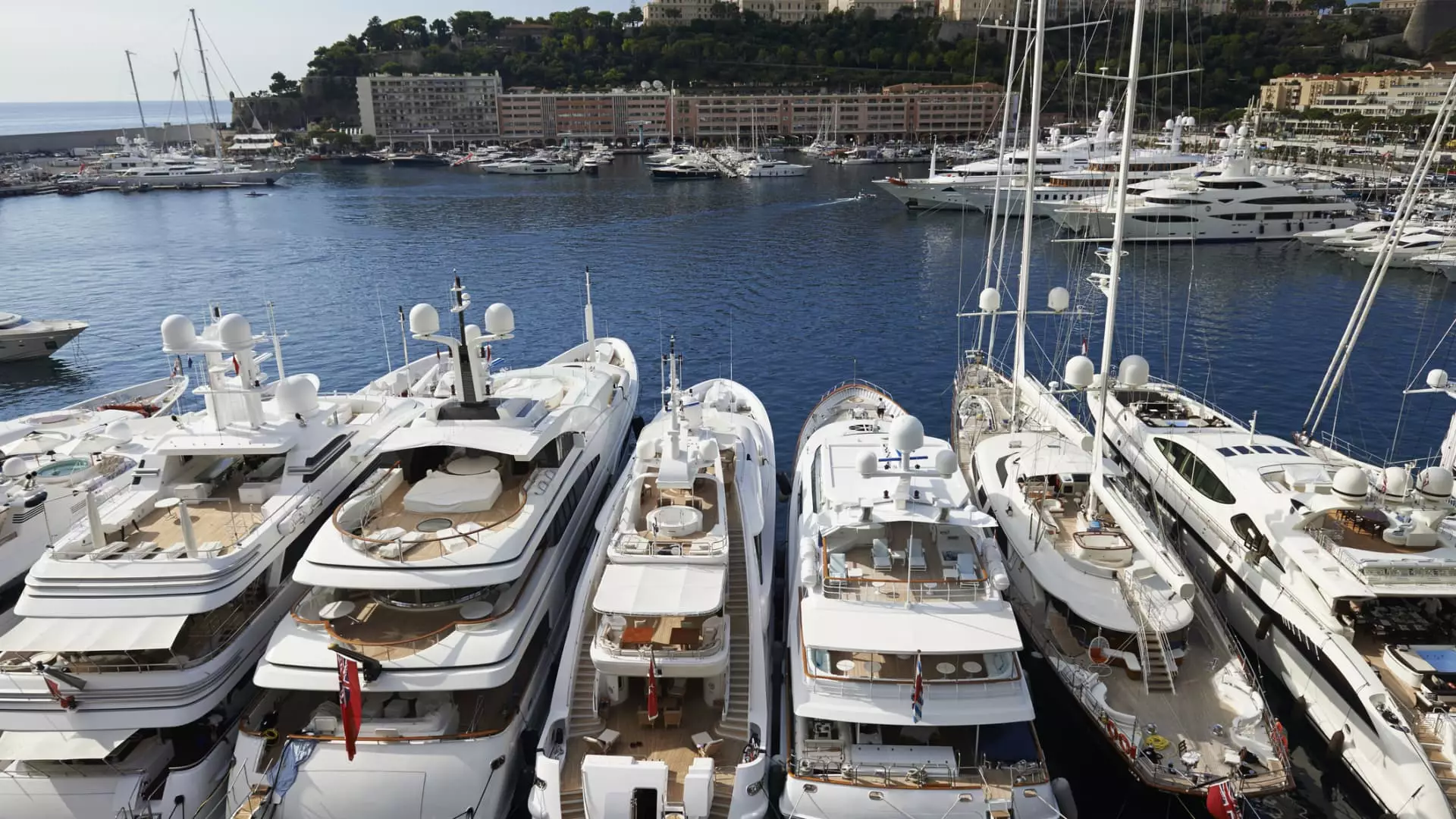In the realm of high-net-worth indulgence, few industries epitomize exclusivity and wealth quite like luxury yachting. Yet, beneath the gleam of polished hulls and the allure of oceanic grandeur lies a fragile economic ecosystem, now under siege by the looming threat of tariffs that threaten to turn this opulent domain into a casualty of political posturing. The recent announcement of a 15% tariff on European-made yachts by the U.S. administration signals more than a mere increase in costs; it heralds a fundamental reshaping of a lucrative market that has historically thrived on transatlantic trade.
This move, ostensibly aimed at protecting domestic shipbuilders, reveals a shortsighted view that disregards the complex global dynamics at play. While American yacht manufacturers have been quietly seeking to capture a larger slice of their own market, the reality is that the European yards—bearing decades of marine craftsmanship—are sharply vulnerable. The tariff acts as a sledgehammer, disrupting a finely tuned supply chain, elevating prices, and ultimately forcing the wealthy to reconsider their purchasing strategies.
And yet, what’s particularly striking is how this policy reveals a broader tendency among the ultra-wealthy to circumvent obstacles rather than confront them head-on. The strategy of foreign flagging—registering yachts overseas—is not just a loophole; it is a testament to the agility of high-net-worth individuals and a reflection of the classic capitalist mindset: adapt or be crushed. While governments may think they are leveling the playing field, they are inadvertently catalyzing a clandestine race towards offshore registration, thus undermining their own regulatory frameworks.
Cost Inflation and the Marginalization of European Yards
For buyers of multimillion-dollar vessels, a 15% tariff is not simply a dollar figure; it is the tipping point that influences decisions rooted deeply in wealth preservation and logistical efficiency. When the deposition of a yacht can take years, and the costs of building or acquiring one are already astronomical, even a seemingly modest tax hike becomes a decisive factor. Many brokers and industry insiders recognize that this tariff effectively punishes European shipyards—those that have historically supplied the hottest markets—by making their products prohibitively expensive.
What’s more troubling is that the tariff lows are unevenly distributed. Larger vessels, often exceeding 100 feet, are more susceptible to strategies like foreign registration, allowing owners to sidestep the levy entirely. Conversely, smaller yachts—those under 45 feet—stand to absorb the tariff costs directly. This discrepancy crafts a new social stratification within the yacht world: a divide between the “haves” who can employ legal loopholes and the “have-nots” who are left bearing the brunt.
This bifurcation will deepen the chasm between different classes of yacht owners, reinforcing a hierarchy where status and wealth are intertwined with the ability to evade taxation through registration maneuvers. It’s a stark reflection of how government policies, even those cloaked in protectionism, often entrench rather than dismantle privilege.
The Long-Term Impact on the European Yacht Industry and American Aspirations
The European yacht industry has thrived on craft, tradition, and an unwavering reputation for quality. Now, that reputation is threatened by the policy decisions of a foreign government — one that may unintentionally accelerate its decline. European yards could see sales plummet, employment falter, and future investment dry up as the business adjusts to a new, hostile environment. The ripple effect could extend beyond the industry’s immediate players, impacting luxury tourism, marine suppliers, and the global markets that revolve around superyachts.
Simultaneously, the U.S. market, under the guise of protectionism, might appear to be bolstering domestic manufacturers, but this short-term benefit is likely illusory. The loss of European competition could lead to stagnation, erosion of innovation, and increased prices. American manufacturers, although positioned to gain momentarily, risk becoming complacent in a market that’s increasingly divided and politicized.
For the wealthy clients, the choice becomes more complex: pay an inflated price, navigate legal loopholes, or pursue alternatives outside traditional channels. This fragmented landscape fosters uncertainty and diminishes the confidence that once made transatlantic yachting a symbol of unrivaled luxury. Ultimately, this political maneuvering risks transforming a thriving, globally interconnected industry into a patchwork of evasions, subsidies, and moving targets operated by a handful of savvy elite players.

